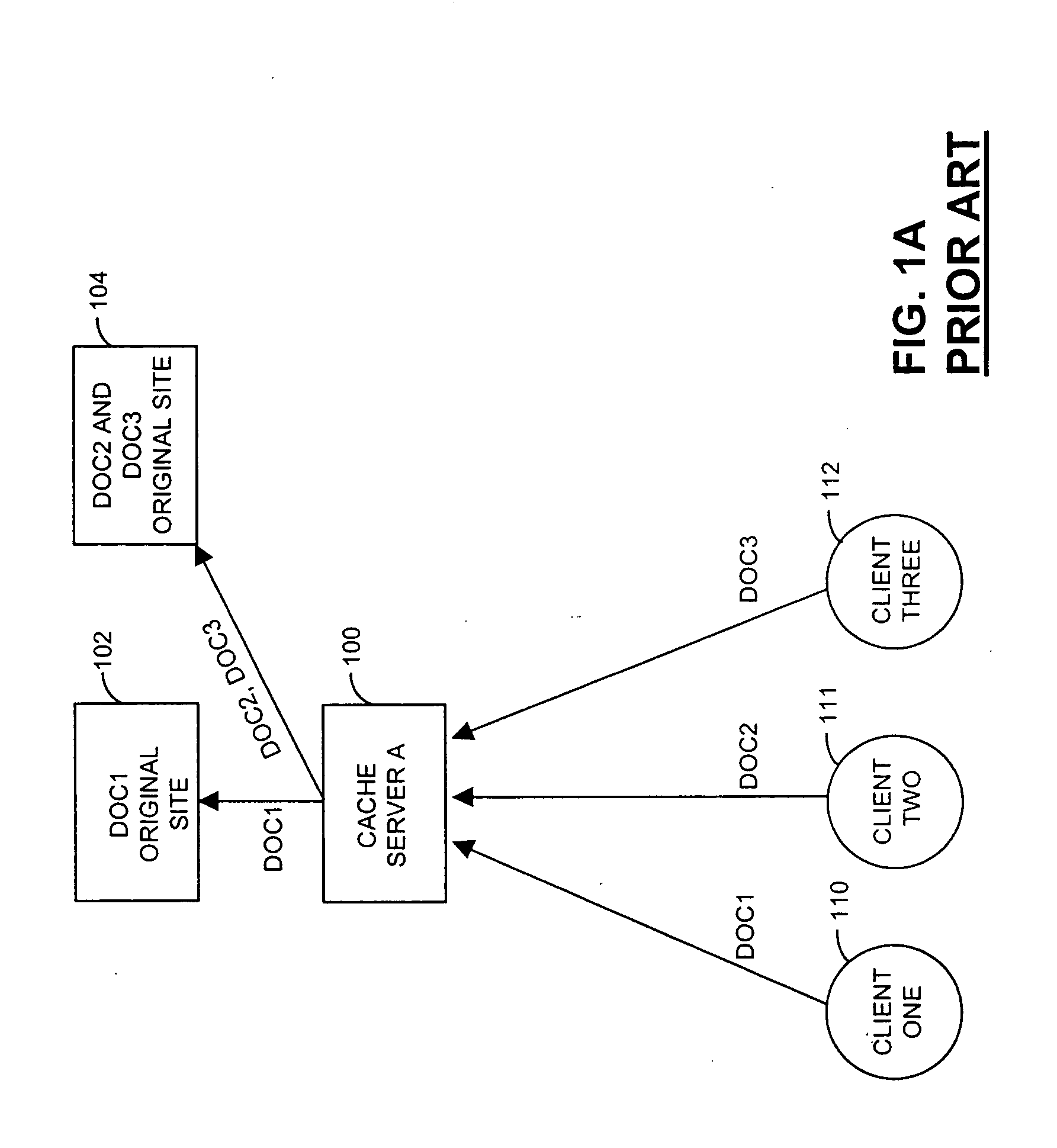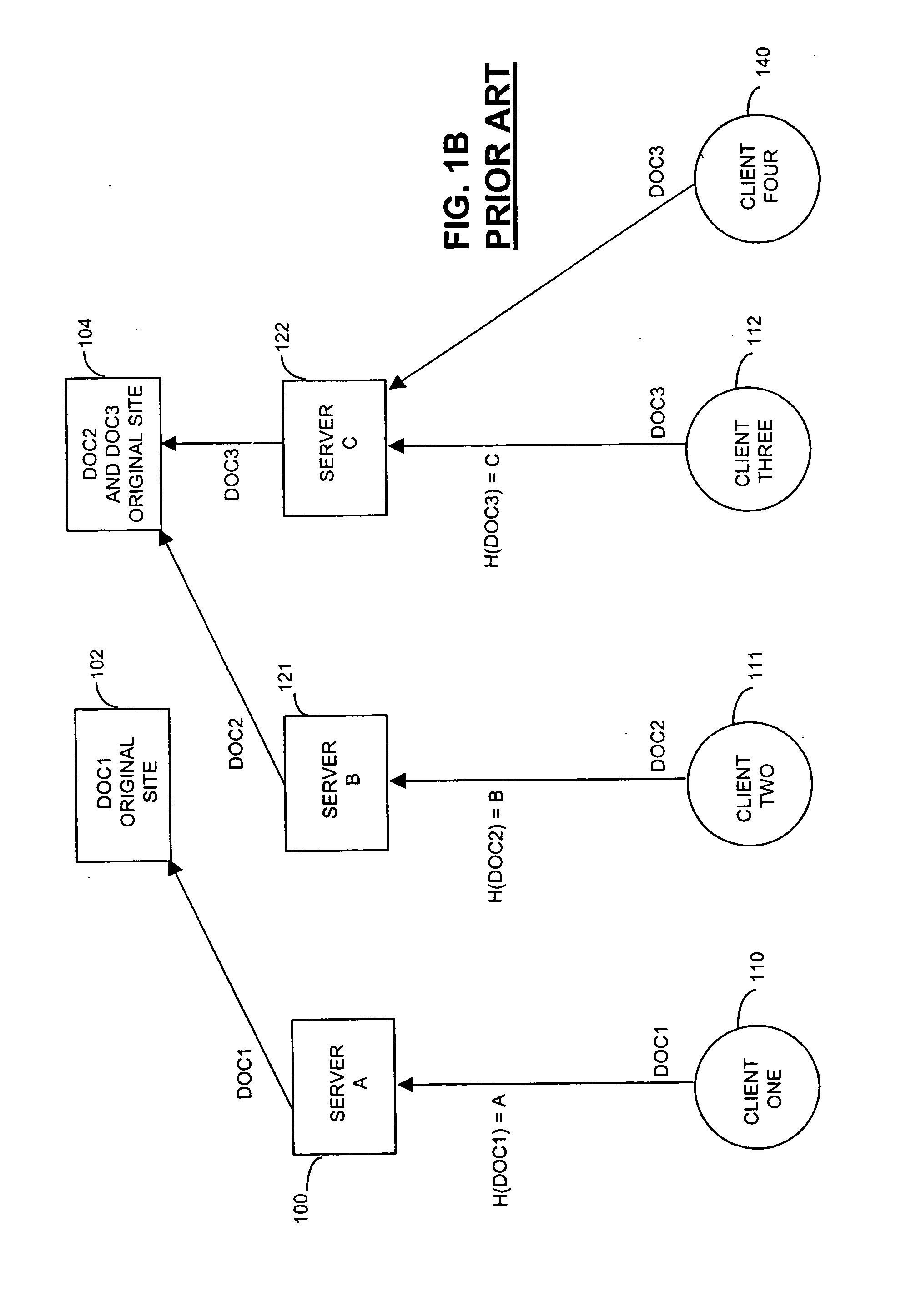Method and apparatus for distributing requests among a plurality of resources
a technology of resource requests and resources, applied in the direction of multi-programming arrangements, instruments, program control, etc., can solve the problems of unreliable and slow communication over that part of the network, server overloading, and “swamped” to increase network traffi
- Summary
- Abstract
- Description
- Claims
- Application Information
AI Technical Summary
Benefits of technology
Problems solved by technology
Method used
Image
Examples
Embodiment Construction
[0060] Consistent Hashing
[0061] In one aspect of the present invention a mathematical mapping space is chosen and a mapping is used to locate requests and resources in the mathematical space. A specific mathematical relationship is also chosen to match a request with a resource in the mathematical space. A request is assigned to the resource whose location in the mapping space has the specific mathematical relationship with the request's location in the mathematical mapping space. Referring to FIG. 4A, a request is mapped to at least one location in the mathematical mapping space (Step 492). Available resources are each mapped to at least one location in the mathematical mapping space (Step 494). These steps, step 492 and step 494, do not have to occur in the order shown, each can be accomplished independently from the other. In fact, in one embodiment, the resources are mapped once, and the mapping is stored for future use with each request. Having mapped the request and the resou...
PUM
 Login to View More
Login to View More Abstract
Description
Claims
Application Information
 Login to View More
Login to View More - R&D
- Intellectual Property
- Life Sciences
- Materials
- Tech Scout
- Unparalleled Data Quality
- Higher Quality Content
- 60% Fewer Hallucinations
Browse by: Latest US Patents, China's latest patents, Technical Efficacy Thesaurus, Application Domain, Technology Topic, Popular Technical Reports.
© 2025 PatSnap. All rights reserved.Legal|Privacy policy|Modern Slavery Act Transparency Statement|Sitemap|About US| Contact US: help@patsnap.com



